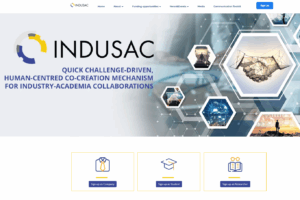
A new management model integrated into the water resources of the Besòs
May 10, 2021
A device to assess emotional state through physiological signals and its application in music therapy for people with disabilities
May 12, 2021The Research Centre for Supervision, Security and Automatic Control (CS2AC) has participated in the SECUTIL project through which a comprehensive security chain management system has been created for networks and infrastructure that supply utilities (such as water, gas and electricity). The system improves physical security, access control and cybersecurity.
CS2AC has developed algorithms to detect cyberphysical attacks (for example, to detect images in a security circuit that appear normal but have been introduced by attackers, when the real images would show intruders accessing the facilities) and technologies that increase resilience to attacks. The detection technologies are based on watermarking signals, which add copyright information or other verification messages to digital documents and show whether images have been altered by an attacker. In addition, algorithms have been developed that can be used to reconfigure the control algorithm once an attack has been detected and isolated, using tolerant control technologies. All these technologies are being tested in laboratory studies and pilot tests in real environments.
As part of the project, cryptographic solutions have been developed to ensure the security and privacy of personal data throughout the service and technology cycle. This reduces the window of risk for critical infrastructure information systems. In addition, simulation tools have been designed and implemented to assist in decision-making by the critical infrastructure’s security management team and new systems and infrastructure security models have been researched.

One of the most notable aspects of the project is the research and development of tools and solutions based on artificial intelligence technologies to predict, protect, mitigate and defend against the new scenario of cyberattacks that is currently emerging and those that will emerge in the near future.
The project results include more advanced, intelligent algorithms and more architectural models and autonomous cybersecurity in cyberphysical systems, solutions which are essential to protect new models of infrastructure and services.
SECUTIL is a project of the RIS3CAT Utilities 4.0 Community, coordinated by Eurecat. Other participants in addition to the UPC’s CS2AC are Cetaqua-AGBAR, Naturgy, Retevisión, the University of Lleida and the Barcelona Supercomputing Center. The aim of the community is to transform the utilities sector by identifying a set of tools and solutions that enable digital transformation to the utilities 4.0 concept, and the creation of an industrial fabric through the development and application of these new solutions.
The project, which has taken three years and ended in March 2021, was funded by the EU’s European Regional Development Fund (ERDF) as part of the FEDER 2014–2020 Operational Programme, with a budget of €100,869.91.
Technology
Topic
You want to know more?
Related Projects
- The Barcelona Innovative Transportation (BIT), the Research Center in Automotive and Advanced Mobility (CER-AMA) and The Future Mobility Research Hub (CARNET) research groups from the Universitat Politècnica de Catalunya - BarcelonaTech (UPC) are participating in the E-MED project, which aims to optimise energy and resource efficiency in public transport systems by addressing energy price fluctuations through smart and participatory solutions across the Mediterranean region.
- The company Friselva S.A., Corporació Alimentària Guissona (bonÀrea), together with the Food Service Cluster and inLab FIB at the Universitat Politècnica de Catalunya - BarcelonaTech (UPC), are participating in the Hydroless project, which aims to optimise water consumption in meat production plants. The project includes an innovative solution to monitor and optimise water use at bonÀrea’s plant in Guissona, as well as the design and development of a digital twin of Friselva’s facilities in Riudellots de la Selva.
- The EU-funded Quick Challenge-Driven, Human-Centred Co-Creation Mechanism for INDUStry-Academia Collaborations (INDUSAC) project has successfully developed and validated a new, human-centred, challenge-driven co-creation mechanism that connects industry with academia across Europe. Over three years of implementation, the project has supported international teams of students and researchers in tackling innovation needs directly submitted by companies. The INDUSAC project has created a dynamic community of industry-academia stakeholders focused on circularity, general sustainability, digitalisation and industry 4.0.
- A research team led by the Mobile Robotics and Artificial Intelligence Group (RAIG) of the Institute of Robotics and Industrial Informatics (IRI, CSIC-UPC) at the Universitat Politècnica de Catalunya - BarcelonaTech (UPC) is taking part in the European project TRIFFID (auTonomous Robotic aId For increasing FIrst responDers efficiency). The aim is to develop a platform to support rescue operations in emergency situations. The initiative combines advanced robotics, artificial intelligence and immersive interfaces to enhance safety and accelerate response in hazardous environments.




